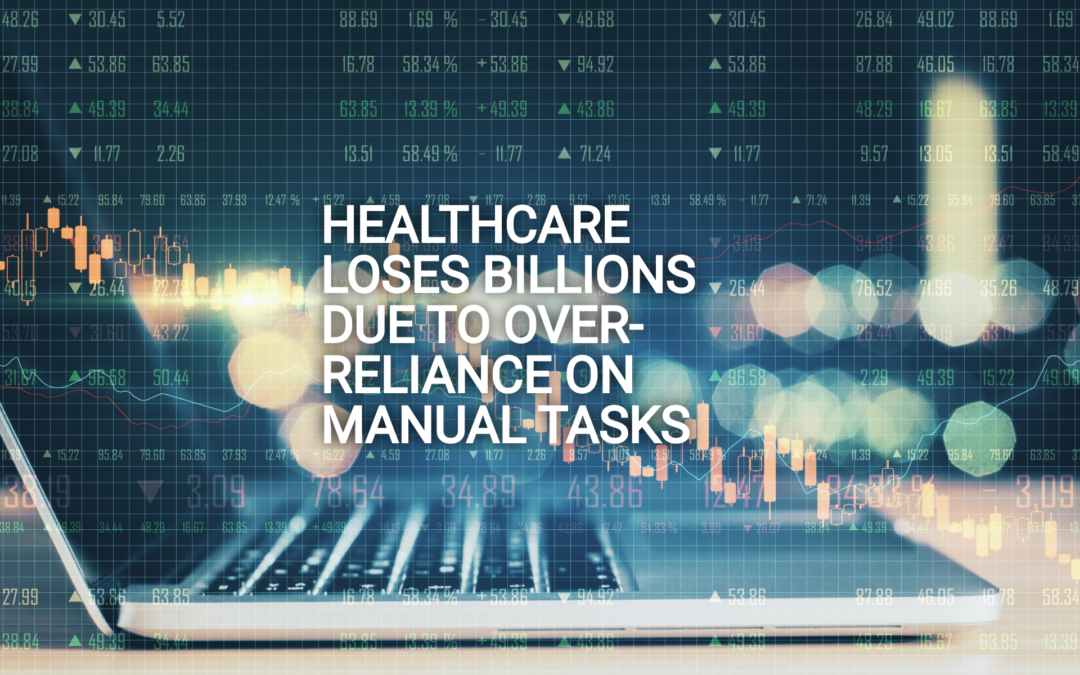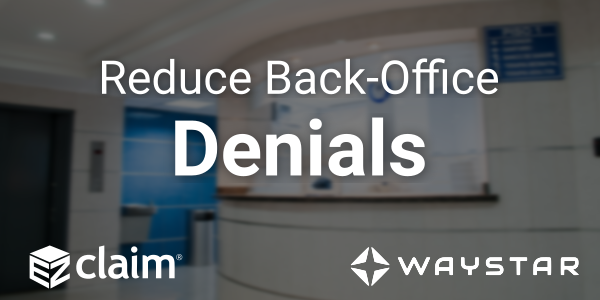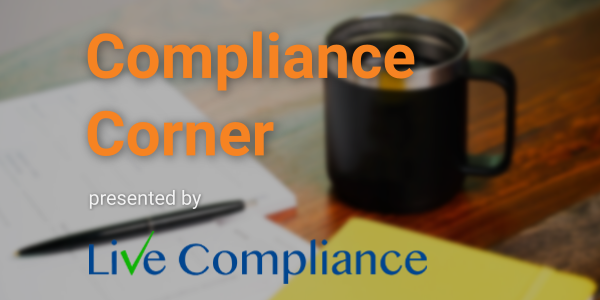
Jun 20, 2022 | EZClaim
Good medical billing practices and procedures are critical to success, but without the proper solutions in place, they become challenging to get right. Far too often small, independent practices become caught up in a cycle of poor cash flow as—without the right partners or tools—their in-house medical coding and billing team become overworked and overwhelmed.
EZClaim works to bring powerful tools to, and make it easy for, small and mid-sized practices and RCM companies to submit clean claims every time easily and efficiently.
Claims that need to be resubmitted drain resources and delay payment as they have to be researched and corrected. There are two ways that unclean claims make their way back to billers:
Denied claims are claims that are processed but not paid by the payer. There are many reasons why a claim may be denied. These could include duplicate claims, uninsured services, missing information, insufficient authorization, late submissions, and other reasons. Your medical billing team must investigate the reason for denial to appeal it.
Rejected claims lack important information or are not in compliance with formatting or data requirements. The payer may not process these claims if the claim contains missing information or incorrect insurance policy numbers. These can be corrected and then resubmitted for processing.
Regardless of whether a claim was rejected or denied, you have a limited time to determine why the claim was not paid and resubmit it.
EZClaim gives you the tools and structure to submit clean claims the first time to avoid rejection in the first place. Your team can take steps at different points in the patient encounter to decrease the chance of a claim being rejected or denied.
Use custom templates and rules to identify common mistakes immediately
It is likely that there are specific billing and coding issues that your team finds continually—this is common in the industry. While many organizations are aware of common billing, code, and denial trends, they don’t have the tools to manage them. EZClaim allows you to create custom rules that review billing and code data, and flag errors for review. Automating as much of the claim review process as possible will ensure your time is used most efficiently.
Use a checklist before each appointment with the patient
Be sure to engage the patient before the appointment to stop potential claim issues from the very beginning—has their insurance or patient information changed recently? Using a scanner to collect patient information makes this process easier. Running an insurance verification is another important step.
Document coding and billing review criteria in a central knowledge base
RCM directors, coders and billers are experts in their industry, but this knowledge is not always documented. To ensure clean claims, there are many billing and coding guidelines that must be referenced. Training and reviewing claims can be difficult due to the constant changes in billing and coding requirements, information specific to your practice and payers, and staff turnover. Having a central place to document policies, procedures, and best practices will allow you to maintain accurate data and make sure that claims are filed correctly. Our partner, Live Compliance, offers solutions to make this easy.
Catch rejections and denials proactively with PM software
With claim status verification features, EZClaim can help you be proactive and catch new rejections as soon as possible. As payers continue to add rejection and denial reasons, EZClaim helps you find out where rejection and denial reason codes are coming from and determine the best way to respond to them.
EZClaim is a leading medical billing and scheduling software provider that combines a best-in-class product, with correspondingly exceptional service and support. For more information, schedule a consultation today, email our experts, or call at 877.650.0904.

Jun 17, 2022 | Partner, Trizetto Partner Solutions
We already know the trend toward automation in healthcare continues to grow each year. As technology continuously improves and the financial bar to entry lowers, the opportunities for healthcare providers and health plans to enhance operational processes grow as well. But even with the radical progress and the easier-to-use-than-ever healthcare operations software, many organizations fail to implement the solutions. It may be a lack of organizational enthusiasm or a simple need for more skilled internal technological expertise.
And while this is likely common knowledge at your organization, the amount of money wasted each year – driven by the absence of process automation – may not. Billions of dollars that could otherwise be spent on improving patient care and satisfaction, on building and rolling out new service lines, and generally improving healthcare operations are wasted every year. Billions.
The most recent CAQH Index reports $372 billion is spent yearly on administrative tasks throughout the US healthcare system. Of that amount, $39 billion of those administrative transactions are specifically tracked by the CAQH Index. “Of the $39 billion, the industry can save $16.3 billion, or 42 percent of existing annual spend, by transitioning to fully electronic transactions,” according to CAQH.
$16 billion in savings.
The current opportunity for savings driven by automated, electronic transactions within the healthcare industry is tremendous. That’s not to say the healthcare industry is doing nothing. CAQH found that healthcare organizations already save $122 billion annually thanks to process automation.
Even with the apparent success of automation, however, CAQH found the utilization, adoption, and growth of fully-automated processes year-over-year was stagnant or modest at best:
-
-
- Eligibility and benefit verification remained steady at 84%
- Prior authorizations increased to 21% from 13%
- Claim status inquiry grew slightly to 72% from 70%
- Claim payment automation increased marginally to 71% to 70%
With the small and slow shift to the use of automated transaction processes in the healthcare industry, there’s a decided advantage–in time and money–to not automating many, if not all, backend operations. Doing so allows staff to focus on strategic initiatives, like building out new programs or service lines, rather than plodding through everyday tasks better tackled through repeatable processes supported by technology.
“The industry continues to make progress towards a more automated administrative workflow as transaction volume increases, new business needs and technology emerge, and health insurance benefit and payment models evolve,” CAQH explains in the report. Nevertheless, as mentioned earlier, the “progress” remains slow, like a river choked with debris.
Ironically, even as automated solutions become more abundant and easier to use, CAQH reports healthcare providers to perform more manual tasks today than in the past. With today’s technology-rich environment, there’s little reason for healthcare providers to input any type of care-related documentation by hand. That time can and should be better spent improving the healthcare experience for patients and their families.
It’s far past time to clear the detritus from the river. With the advantage of today’s technology, it’s easier to make the change when each of us plays a part in the cleanup.
Contact a TriZetto Provider Solutions representative today to learn more about automation-enabled technologies that can help drive efficiencies and increase revenue.
EZClaim is a leading medical billing and scheduling software provider that combines a best-in-class product with exceptional service and support. For more information, schedule a consultation today, email our experts, or call at 877.650.0904.
[ Contribution from the marketing team at TriZetto ]

Jun 12, 2022 | Partner, Waystar
A version of this guide to reducing back-office denials originally appeared on Waystar’s blog.
The last few years have been hard for just about everyone involved in healthcare, and not just because the revenue cycle has grown more complex. According to data from the Bureau of Labor Statistics, people on average now hold 12.4 jobs from age 18 to 54—nearly half of which are held before the age of 25. And that equates to just as many changes in their insurance coverage. Providers in turn must struggle to keep up with their patients’ seemingly ever-changing eligibility status, along with the details of what coverage is offered per level for a variety of payer plans. All that means it’s more challenging than ever to manage just about every aspect of the revenue cycle, and denials are no exception.
A recent MGMA poll found 69% of respondents had seen a noticeable increase in denials in 2021. Among those respondents, the average increase in denials was about 17%. And while there are plenty of reasons to explain the increase, we took the opportunity with our upcoming white paper, “Supercharge eligibility + estimates with a better payer intelligence engine,” to assess how eligibility-related denials factor into the equation.
How eligibility issues stir up more denials
Some of the results produced while developing that white paper were striking. When benchmarking denials for two similarly sized health institutions (both with similar patient populations and payer mix) we discovered a sizable difference in denial rates, one that indicated the first provider had processed millions less in denials. Further analysis revealed this provider dealt with roughly 35% fewer denials, which ultimately helped contribute to an additional $3-4M in revenue.
Generally, we expect such a discrepancy to be explained by a handful of familiar factors: a low clean-claims rate, an abundance of late filing or an escalating number of appeals left unattended to—issues normally associated with back-office management. But in this case those common factors did not dominate the narrative. Instead, the following stood out as the top drivers and differences between the two:
- A $39M difference in denials for patients identified as “not eligible”
- A $34M difference in denials related to coordination of benefits
- A $4M difference related to benefit maximums being exceeded
When we began to examine those discrepancies more closely, it became clear that there really wasn’t a back-office problem at all. In fact, client processes were considered quite lean and operated with consistent accuracy. Instead, problems were being generated much earlier in the rev cycle. By the time registration, scheduling and services had been rendered, there had not been notable mitigation to denial risks that should’ve been flagged. And with ever growing payer payment adjudication cycles, it seemed a steadily increasing denial rate was inevitable.
Looking for a root cause
In a study of Waystar clients, we found more than 10% of all registrants selected the wrong plan, and up to 35% of accounts triggered some kind of eligibility alert that indicated a potential denial risk. In other words, a significant portion of denials are caused by eligibility issues, one that could have been identified well in advance of them becoming problems. Finding other payers on file, replacement plans, CHIP, dental-only coverage and many other risk categories were simply not captured or flagged, which would have allowed end users to remediate the risk before a patient had even arrived for their appointment.
But what makes identifying these risks such a challenge? Ultimately there’s more to the problem than administrative oversight. The electronic data interchange (EDI) that makes modern eligibility solutions possible often includes message segments, plan codes and other critical identifying data that needs to be normalized and extracted. But that’s not possible without the right tools. If your front-end solution is not effectively crawling eligibility responses for risks like these, it’s time to upgrade your toolset and update your strategy.
Eligibility related denials are not always caused by issues in the coverage detection process, either. When it comes to common, multi-payer scenarios, benefit levels and coordination regularly cause problems in the claims adjudication process and ultimately have a significant impact on denial rates.
Older EDI solutions do not fully comprehend payer logic and often have a hard time identifying levels of coverage across different services. It’s no longer possible to rely on something like a ‘single STC 30’ EDI call to yield the benefit it (literally) once did. Now these benefits must be presented in a manner that lets staff easily interpret coverage and realistically determine when to expect payment from the patient and payer.
Wrapping it up: developing a comprehensive approach
You could be missing your single largest opportunity to strengthen your revenue cycle without a comprehensive approach to patient access eligibility. And one of the most important aspects of a truly comprehensive approach is shoring up your front-end processes to reduce the number of issues a claim might encounter as it moves downstream through the revenue cycle. Not only does this enhance the patient experience, it steadies revenue flow as it cuts down on the sort of trouble that would otherwise further drain staff time and resources.
Check out our most recent whitepaper, “Supercharge eligibility + estimates with a better payer intelligence engine,” for a more comprehensive look at what we’ve covered here. If you’re ready to tackle the challenges afflicting your front office, check out Waystar’s Financial Clearance solutions, which offer a smarter, simpler way to streamline areas like eligibility verification and prior authorization.
Join Waystar + EZClaim on July 14th to learn how to outsmart your denials.

Jun 6, 2022 | Live Compliance, Partner
Complying with data privacy and protection regulations wouldn’t give several business owners sleepless nights if it only meant installing a predefined list of security solutions. Compliance goes way beyond this and for good reason. In principle, regulators, local or international, want businesses to:
- assess the type of data they store and manage
- gauge the potential risks the data is exposed to
- list down the remediation efforts needed to mitigate the risks
- undertake necessary remediation efforts regularly
- and most importantly, document every single step of this seemingly arduous process as evidence
Each of the above steps are mandatory and non-negotiable. A closer look will tell you that installing a list of expensive security solutions comes only after the first three steps in the process have been followed. Skipping past these initial steps and acting merely on presumptuous knowledge is tantamount to leaving your business’ future to sheer chance. It’s anyone’s guess what that would lead to.
That’s why we’re going to explain to you why a thorough and accurate risk assessment is truly the first step towards achieving compliance. Moreover, when repeated regularly, it can help you demonstrate continuous compliance while keeping cyberthreats at bay.
Security Risk Assessments Unearth Crucial Insights
A thorough and accurate risk assessment can unearth a host of crucial insights from even the deepest and darkest alleys of your IT environment to ultimately empower your decision making. Having actionable insights at your disposal can help you build strategies to reduce risk levels in practical ways instead of shooting in the dark by testing various tools.
Here are some of the most important details that become more apparent and unambiguous with every risk assessment.
Baseline of the System
A risk assessment helps you chart out the lifecycle of all data that is collected, stored and managed in your entire network.
Identification of Threats
A meticulous risk assessment identifies all the possible threats, such as intentional, unintentional, technical, non-technical and structural, that your business data is exposed to.
Identification of Vulnerabilities
With each assessment, you get the latest list of vulnerabilities prevalent in your network with respect to patches, policies, procedures, software, equipment and more.
Current Status of Existing Controls
From the assessment report, you can also understand the existing security and privacy controls protecting your business against vulnerabilities.
Probability of Impact
An accurate assessment report is fully capable of anticipating the probability of a threat that might exploit one of your network’s existing vulnerabilities.
Strength of Impact
Risk assessment also helps you gauge the possible impact of any threat hitting your business.
Imagine how easy it would be for you to build and implement a strategy to fix the security loopholes in your business while maintaining a well-documented record of your efforts.
Why Risk Assessment Is Needed for Compliance
While assessing whether you did everything in your capacity to ensure full compliance with the regulations, you also need to keep in mind that a regulator seeks evidence of compliance – documented reports. Besides helping you chart a successful path to compliance, a thorough risk assessment adds great weightage to demonstrating evidence of compliance. When you present the risk assessment reports along with other documentation, you demonstrate how your business carried out due diligence in upholding principles of data privacy and protection.
Please remember that no regulator expects you to have a fail-safe strategy. What matters is uncompromising intent, informed action and undeterred consistency. If you can demonstrate all this, you will most likely avoid any punitive action as well as a long list of problems could that surface afterwards.
Help Is Just a Conversation Away
Contrary to what is often claimed, there are no shortcuts to compliance or to any of the steps that lead to it. At the outset, achieving compliance might seem grueling. However, it isn’t as bad as it seems when due process and expert guidance is followed.
A conversation with us is all you need so we can help you walk through the complexities of risk assessment with diligent and customized guidance.





